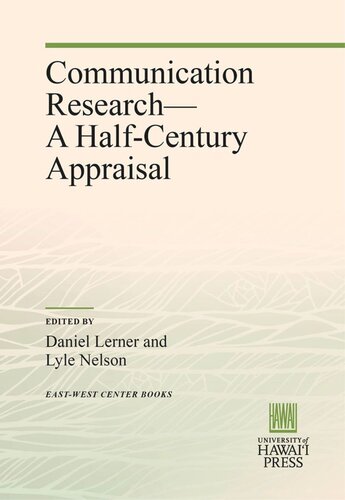

Most ebook files are in PDF format, so you can easily read them using various software such as Foxit Reader or directly on the Google Chrome browser.
Some ebook files are released by publishers in other formats such as .awz, .mobi, .epub, .fb2, etc. You may need to install specific software to read these formats on mobile/PC, such as Calibre.
Please read the tutorial at this link: https://ebookbell.com/faq
We offer FREE conversion to the popular formats you request; however, this may take some time. Therefore, right after payment, please email us, and we will try to provide the service as quickly as possible.
For some exceptional file formats or broken links (if any), please refrain from opening any disputes. Instead, email us first, and we will try to assist within a maximum of 6 hours.
EbookBell Team

4.1
80 reviewsCommunication research, a relatively new field of scholarly endeavor, began about fifty years ago with some of the pioneering studies by Paul Lazarsfeld and others. Today it has become central to almost all national development efforts and to studies of the organizational structures of industrial societies.
In what has been termed by many scholars the "Age of Communication," it is timely and appropriate that an appraisal be made of past accomplishments and failures as the basis for determining future directions and potential of communication research. This book makes such an appraisal and assesses the present state of the various areas of communication research. Written by world authorities in the major areas of communication research, chapters cover the diversity of the field: the impact of modern communication on traditional cultures and the spread of "open learning" systems; intriguing ideas such as that of Charles E. Osgood, whose "How Should a University Be?" provides a blueprint for reorganizing the university, and that of Harold D. Lasswell, whose "Building as Political Communication" views architecture as symbolic of power and shows how building has been manipulated to reinforce power.
It is fitting that this book be dedicated to Wilbur Schramm, whose contributions, perhaps more than those of any other person, have brought the field of communication research to international prominence.